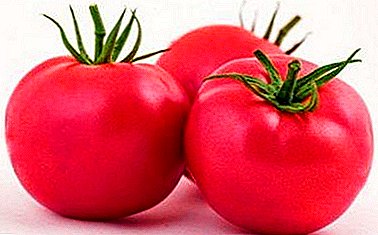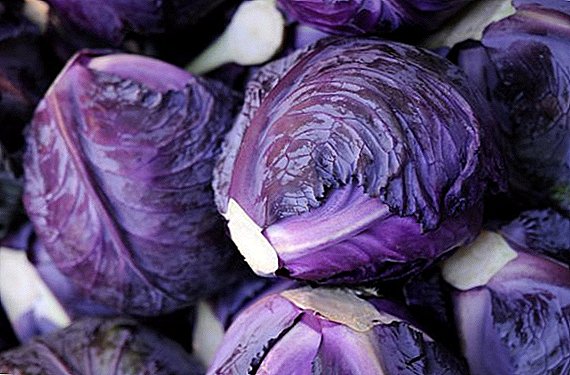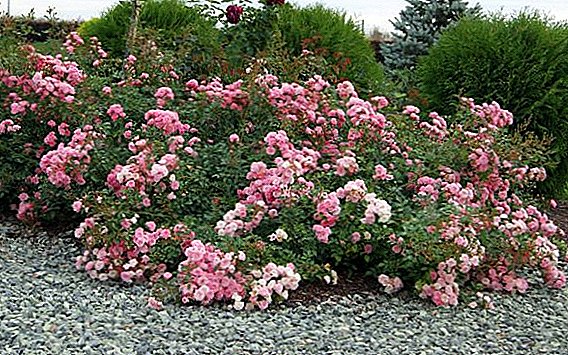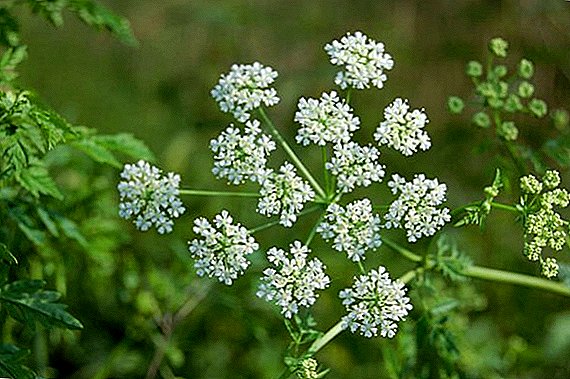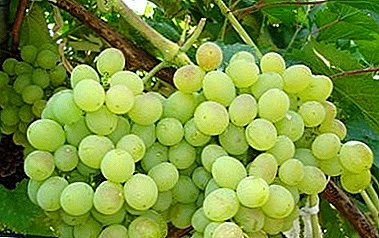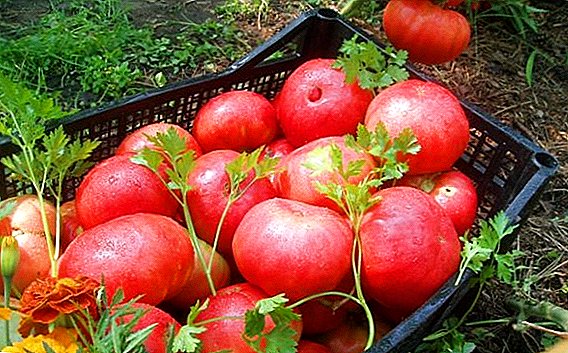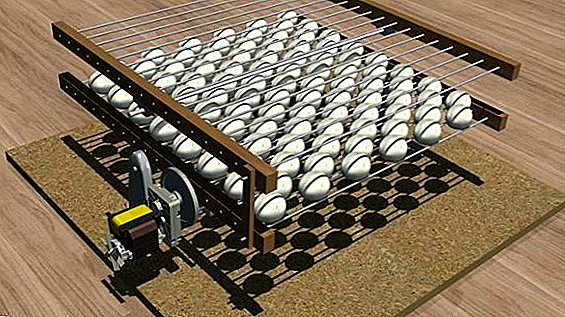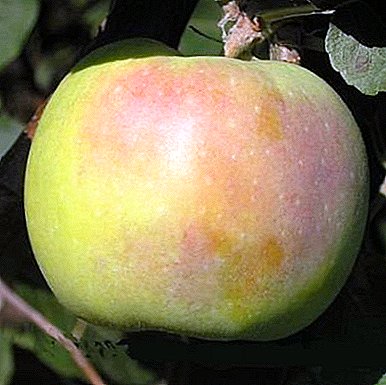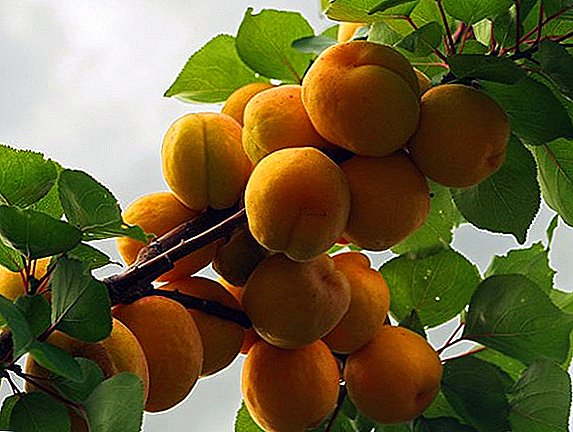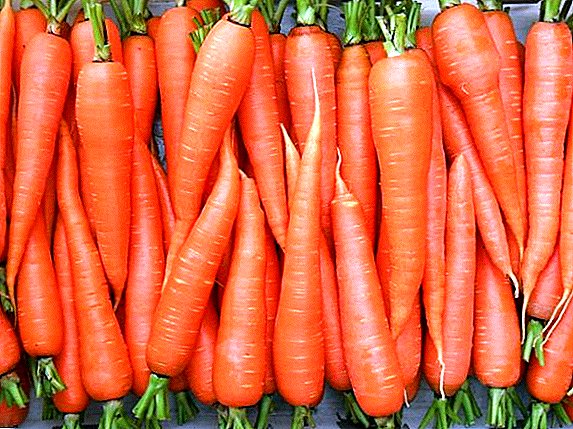 Tasty, sweet, crunchy, rich in vitamins and trace elements, such an indispensable carrot. In this vegetable culture, the appearance corresponds to the internal content. Smooth, large, juicy carrots are a sign that the soil for planting the root is chosen correctly, and the fertilizer complexes are well chosen.
Tasty, sweet, crunchy, rich in vitamins and trace elements, such an indispensable carrot. In this vegetable culture, the appearance corresponds to the internal content. Smooth, large, juicy carrots are a sign that the soil for planting the root is chosen correctly, and the fertilizer complexes are well chosen.
Importance of Fertilizers
The taste of a vegetable is directly dependent on the nutrients, trace elements and moisture during the growing season. For the sweetness of the root you need to make 2-3 supplements per season.
Important! When fertilizing carrot beds you need to remember about the measure. Carrots do not like excess feedings, this makes its taste and appearance worse, and storage time decreases.
How to feed carrots in the open field

Top dressing of carrots in an open ground - This is one of the important factors for obtaining a rich harvest. Carrot - pretty vegetable capricious, acutely responsive to nutrient deficiency and excess.
In the garden carrot is compatible with plants such as onions, beans, radishes, lettuce, spinach, peas, tomato, sage, parsley and rosemary.
Mineral fertilizers
Mineral fertilizers are applied to the soil 20 days before the intended planting. In the prepared place make a mixture of nitrogen and phosphate dressings, then dig a bed.
Potassium is introduced into the soil later, more often in the form of a liquid mixture, since in this form it is more easily absorbed by the plant. For dressing with potassium, it is necessary to use chlorine-free mixtures, since chlorine inhibits the plant.
Organic fertilizer

For better growth of the root crop, organic matter is introduced into the soil in the autumn period, but if the culture grown at this place has been fertilized humus - it is optional to bring additional top dressing, it is enough nutrients in the soil.
Peat and compost contribute 7 kg per 1 sq. M. meter. If the acidity of the soil is higher than 5.5, it is necessary to perform deoxidation works by adding chalk, ash or dolomite flour to the ground.
Important! Simultaneous introduction of lime and nutrients into the soil is unacceptable. There should be an interval of 3–4 weeks between these procedures.
Fresh fertilizer (mullein, bird droppings) is not applied to carrots, as it does not affect the yield increase of the vegetable in the first year, but affects the growth points of the plant and contributes to the fact that the root crop loses its presentation (branched, becomes clumsy).
Top dressing by stages
Each element is important for the formation of a beautiful and high-quality vegetable. An excess or lack of trace elements has a bad effect on the development of the root.
Preparing the soil for planting
Place for planting root must begin to prepare in the fall. Humus or compost (10 liters per 1 square meter) should be added to the poor soil, sawdust, peat and sand are added to the heavy soil, and sour chalk.
In the spring, a week before the intended sowing, the earth is dug up, leveled and watered with warm water. The prepared soil is covered with plastic wrap - it will not allow the earth to dry and will help to warm the soil.
Fertilizers during sowing

If for some reason you did not have time to fertilize the future carrot beds, then this can be done immediately before planting:
- In the prepared solution of 1 liter of water with the addition of 1 tbsp. spoon wood ash put a bag of carrot seeds, leave it in the liquid for one day. Soaked seeds are dried and sown in the ground under the film.
- Cooked ordinary liquid paste on flour. In the cooled paste it is diluted with mineral fertilizers for carrots, add the seeds of the root and squeeze with a confectionery syringe into the prepared grooves.
Seeds also multiply: plumeria, blueberries, Indian onions, lisianthus, clivia, adenium, arugula, mountain ash (aronia) blackfruit, fennel and aglaonemoya.
How to fertilize carrots in the process of growing

The first top dressing with mineral fertilizers is given with the appearance of 2-3 sheets, as a rule, it is applied after thinning the beds. In small areas, it is better to use liquid mixtures.
For the first feeding carrots use: 10 liters of water, 25 grams of ammonium nitrate, 30 grams of superphosphate, 30 grams of potassium salt. This volume should be enough to handle 10 meters of beds.
Did you know? Since 1991, in the European Union carrots are considered fruit. Thanks to the efforts of the Portuguese, a decree was passed in which carrots were recognized as fruit. This was due to the fact that, according to European laws, it is allowed to make jam only from fruits and berries, and the Portuguese from the orange root make very tasty sweet jam.
The second feed. Conducted after 20 days of the same composition.
Third dressing carried out for late varieties of vegetables 20 days after the second, without fertilizers containing nitrogen.
Top dressing needs to be made after the main watering or after a rain, so all necessary nutrients remain in the soil.
Growing tips

For planting a root crop, it is necessary to select a site in an open field, without obscuring during daylight hours. The root crop, planted in a darkened area, is small, frail. The soil for planting should be light, with a drainage effect.
If by the appearance of the plant you do not understand which element is missing the plant - conduct a comprehensive feeding, but reduce the concentration of the composition in half.
Watering the plants is best in the early morning. The temperature of the water that is irrigated should vary between 20-25 ° C. Vegetable does not like frequent watering, but without them the growth of the plant is impossible.
Did you know? Joe Atherton has grown the world's longest carrot. Its dimensions reached 581 cm.
When watering it is necessary to control the level of soil moisture, it should be equal to the length of the vegetable. 
Feed carrots necessary. It is necessary for full growth, nutrition, increased vitality and immunity. Appearance, taste and duration of storage of carrots depend on correctly selected and timely fertilization.


